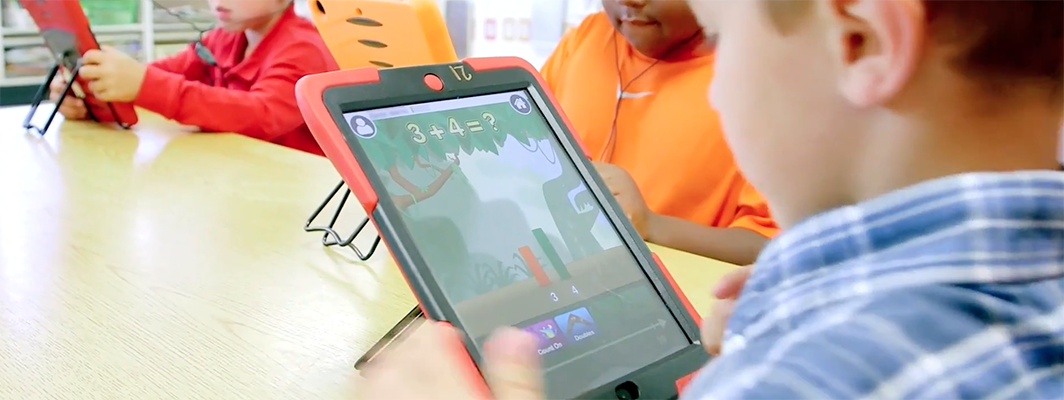
This article was originally published on The Conversation. Read the original article.
Parents and teachers know that reading to their children in preschool and kindergarten is important. But how can parents and teachers support young children’s mathematics knowledge?
One often overlooked activity is patterning, or thinking about patterns. Patterns are predictable sequences, such as stripes (for example, a yellow-green striped shirt) and rhythms (for example, da-de-dum). Young children like to make patterns when they draw and play.
Patterning encourages children to look for regularity and rules – a critical component of mathematical reasoning. For example, in the color pattern red-blue-blue-red-blue-blue, the rule is the part that repeats over and over (red-blue-blue in this pattern).
My own research shows that early pattern knowledge can support later mathematics achievement. And parents and teachers can work with their children from an early age to get them to think more deeply about patterns.
Parents and teachers most often ask preschool children to copy and extend patterns.
For example, they ask children to extend a pattern by deciding what comes next in the pattern. Although a good start, these tasks do not push children to think about rules and regularities.
In contrast, parents and teachers are less likely to encourage their children to do more sophisticated tasks that promote more attention to rules and regularities.
For example, they rarely ask children to make the same kind of pattern using different objects or sounds (we call this abstracting a pattern) or to name the part of the pattern that repeats (identify a pattern’s rule).
This means parents and teachers are missing out on opportunities to support children’s pattern knowledge and mathematical reasoning.
We have found that many preschool children (ages 4 to 5) are able to abstract patterns when prompted to do so. Further, their ability to abstract patterns over the course of the pre-kindergarten year also improves. However, most have difficulty identifying a pattern’s rule.
One effective way to support attention to the pattern rule is for adults to label patterns using common, general terms. For example, preschool children learn better when alphabet letters are used to explain a pattern.
So, a red-blue-blue-red-blue-blue pattern could be labeled as an “ABB pattern,” rather than labeled using the color names. A new yellow-green-green-yellow-green-green pattern could be labeled as an “ABB pattern” too. This helps children see that the two patterns share a common rule.
If special attention is given to patterning, it can help improve pattern knowledge. For example, research has found that when preschool children were encouraged to create new patterns over a period of six months, using different materials and with encouragement to identify a pattern’s rule, they were able to explain patterns better a year later.
When special attention is given to patterning, it also improves children’s general mathematics achievement. Special attention to patterning in preschool and in first grade led to better general math knowledge at the end of the school year.
And this early pattern knowledge matters for mathematics achievement in fifth grade as well. Children with better pattern knowledge at age seven had better mathematics achievement at age 11. Early pattern knowledge was found to be important for building later knowledge across a variety of mathematics topics, including number, algebra and geometry.
This also raises the issue of adding this to the Common Core State Standards, which currently do not include patterning as a math content standard at any grade level.
There was limited evidence available when the standards were written, but now that we know that patterning supports important mathematical reasoning and achievement, I believe it should be made part of the Common Core standards.
At the same time, teachers and parents should consider how to support patterning in preschool and the early grades. They should help children look for regularities and rules in patterns by asking them to make the same kind of pattern using different objects or sounds and to name the part of the pattern that repeats, so as to identify its rule.
This will help provide a foundation for future math learning and reasoning.
This article was originally published on The Conversation. Read the original article.